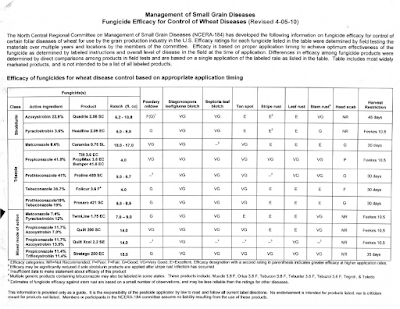The presence of this mite as a significant factor of timothy losses has been reported in Lancaster, Lebanon, Dauphin and York counties over the past 2 years. Some yield loss estimates range from 30-70% loss of yield. This problem, however, has most likely been present for a longer period of time but gone unnoticed. In Maryland, problems have been seen for the last 10 years. When the problem first occurred in during the early 1990’s in Maryland, the mites only infested the variety Climax, but high populations of the mite have recently been encountered on other varieties. In 1999, the mite was officially identified as the cereal rust mite, A. hystrix, by Dr. Ronald Ochoah, a USDA-ARS mite specialist. This is the first record of this species in Pennsylvania. A. hystrix has been infesting timothy for some time, but due to its small size, growers have attributed its subtle injury symptoms to agronomic reasons. Based on grower contacts and surveys by extension personnel in Maryland, Delaware, and Pennsylvania, the range of cereal rust mite infestations is expanding and virtually every acre of timothy grown in central and western Maryland and southeastern Pennsylvania is infested to some degree.
Timothy hay is a very profitable cash crop produced on an estimated170,000 acres in Pennsylvania. It is usually marketed to the horse industry at premium prices ranging from $75 to $180 per ton. Gross revenues for this crop range from $216 to $315 per acre. The prices of good quality timothy hay can exceed that of alfalfa. Production of timothy in Pennsylvania is currently not high enough to satisfy the horse industry; so considerable quantities of timothy are imported into the state to meet the demand. Thus, reductions in the yield and quality of timothy grown in Pennsylvania result directly in economic losses to growers and indirectly to horse owners who have to pay higher prices for imported hay.
Description:
Adult rust mites are very small (<1mm). They are spindle-shaped, with four legs and may be white, yellow or orange. You will need a hand lens to
see them. To check for eriophyid mites, look for off-color foliage, leaf or bud abnormalities. Use a 10X or 20X hand lens. Large mite populations often produce many elongate, white shed skins. The mites feed on bulliform cells at the base of grooves on the adaxial leaf surface. Eggs are deposited in the grooves, and both eggs and immatures become distributed higher in the canopy as leaves unfold. Adult mites move downward in the plant crown, where they prefer to feed on the youngest tissues of the plant. The mite undergoes numerous generations per year (a generation time of 16-18 days at 20o C) and there is no known diapause stage. Although development is reduced, mite stages are active during the winter in the crowns of its host plants.
Injury:
The feeding of A. hystrix causes direct injury to timothy, which results in retarded growth, stunting, and discoloration. No other pest species or agronomic factor is more important as a constraint in timothy production than the cereal rust mite. The feeding of A. hystrix causes direct injury to timothy, which results in retarded growth, stunting, and discoloration. Severe mite infestations have two negative impacts on local growers. Feeding injury causes substantial yield losses, as much as 50%, and also reduces hay quality by the brown discoloration. Horse producers are reluctant to buy hay that is not the normal color of quality timothy. As a side note, A. hystrix is also known to vector ryegrass mosaic virus (RMV), a serious disease of temperate grasslands, and may be a vector of agronpyron mosaic virus (AMV), a minor disease of wheat and other grasses. These diseases cause substantial losses to pasture production in other parts of the world, especially in Europe. However, the presence of RMV and AMV in the USA has not been detected. The symptoms of feeding injury on timothy resemble the typical symptoms of a viral infection; however, disease infections have never been confirmed by ELISA determinations. Nonetheless, if these foriegn viruses enter the US, there exists the potential for their virulence on forage grasses and wheat due to the abundance and wide distribution of the mite vector.
Time of Attack:
Adults and eggs are present overwinter and the adult hatch begins in March with the peak adult population peaking in April. Damage is most evident in April and will continue into May.
Scouting:
Growers should observe fields in early to mid March and look for the presence of small round eggs in the grooves of the timothy leaf surface.
Treatment is recommended in fields with a previous history of cereal rust mites and/or when 25% of the plant tillers exhibit curled tips of the new leaf blades within several weeks following green-up. There are no know thresholds developed to date. Research is underway to develop a monitoring plan and threshold levels for economic justification of treatment. The following tables provide some economic analysis of the pest.
Video for Scouting.
Scouting Rust mites on Timothy



















